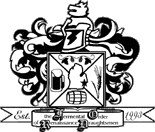 |
 |
 |
 |
 |
 |
| January 2004 | Fermental Order of Renaissance Draughtsmen | Volume 12 Number 1 |
The next meeting will be held back at Bailey's Pub 'N Grille in
Dearborn on Wednesday, . Bailey's is located on the southeast
corner of Michigan and Mason. Their address is 22091 Michigan Avenue
and their phone number is 313-277-3212. As usual, the thirsty hardcore
who want dinner will start arriving around 5PM, people will drift in
for
an hour or so, and we will start our meeting around 6PM.
The club meetings will still be held at Bailey's in Dearborn, but we will be meeting in the lounge in the basement. Management at Bailey's has asked us to try to use the door closer to Michigan Ave on Mason. This door is right by the stairs to the downstairs lounge.
Please contact me if you have any questions.
Thank you for your understanding.
December's competition results are tabulated below.
| Holiday Ales, English, Scottish Strong Ale, Barleywines and Imperial Stouts | |||
|---|---|---|---|
| Place | Brewer | Style | Points |
| 1st | Bob and Kim Barrett |
Rus. Imp Stout | 42.5/50 |
| 2nd | Chris Frey |
Rus. Imp. Stout |
40.5/50 |
| 3rd | Mike Arend and Kathy Loftus |
Pumpkin Ale |
40.3/50 |
| 3rd | Jim deVries |
Holiday Ale |
40.3/50 |
| HM |
Tyler Barber |
Scottish Strong |
39/50 |
| HM |
Chris Frey |
Barleywine |
37/50 |
| HM |
Steve Close |
Barleywine |
39/50 |
| HM |
Steve Close |
Holiday Ale |
35.3/50 |
| HM |
Steve Close |
Spiced Ale |
34.67/50 |
| HM |
Don Beyer |
Rus. Imp. Stout |
34.5/50 |
| HM |
Tyler Barber |
Christmas Ale |
31/50 |
| HM |
Chris Frey |
Barleywine |
30.67/50 |
This month's competition is Barleywine BJCP Category 12. It
is
another AHA competition The details for the club only competition can
be
found on the appropriate AHA web page.
Bottle
and
entry
forms (useful for non-AHA competitions) can be found there
too. Additionally, we are also having an All Grain Beer
Competition which must be at least 50% grain.
BARLEYWINE AND IMPERIAL STOUT
12A. English-style Barleywine
Aroma: Moderate to intense fruitiness; presence of hops (English varieties) may range from mild to assertive. A caramel-like aroma is often present.
Appearance: Color may range from rich gold to very dark amber or even brown. Often has ruby highlights. May have low head retention.
Flavor: Fruity, with a great intensity of malt. Hop bitterness may range from just enough for balance to a firm presence; balance therefore ranges from malty to bitter. Some oxidative flavors may be present, and alcohol should be evident.
Mouthfeel: Full-bodied, with a slick, viscous texture. Gentle smooth warmth from alcohol should be present.
Overall Impression: The richest and strongest of the English Ales.
History/Comments: Usually the strongest ale offered by a brewery, and often vintage-dated. Normally aged significantly prior to release. Often associated with the winter or holiday season. Although a hoppy beer, the English Barleywine places less emphasis on hop character than the American Barleywine and features English hops.
Ingredients: Well-modified pale malt should form the backbone of the grist, with judicious amounts of caramel malts. Dark malts should be used with great restraint, if at all, as most of the color arises from a lengthy boil. English hops such as Northdown, Target, East Kent Goldings and Fuggles.
Vital Statistics: OG: 1.080-1.120+
IBUs: 50-100 FG: 1.020-1.030+
SRM: 10-22 ABV: 8-12+%
Commercial Examples: Anchor Old Foghorn, Young’s Old Nick, Fuller’s Golden Pride.
12B. American-Style Barleywine
Aroma: Moderate to intense fruitiness; presence of hops (typical American varieties) may range from moderate to dominant. A caramel-like aroma is often present.
Appearance: Color may range from rich gold to very dark amber or even brown. Often has ruby highlights. May have low head retention.
Flavor: Fruity, with a great intensity of malt. Hop bitterness may range from just enough for balance to a firm, resiny dominance; balance therefore ranges from slightly malty to intensely bitter. Some oxidative flavors maybe present, and alcohol should be evident.
Mouthfeel: Full-bodied, with a slick, viscous texture. Gentle smooth warmth from alcohol should be present.
Overall Impression: A well-hopped American interpretation of the richest and strongest of the English ales.
History/Comments: Usually the strongest ale offered by a brewery, and often vintage-dated. Normally aged significantly prior to release. Often associated with the winter or holiday season. The American version of the Barleywine tends to have a greater emphasis on hop bitterness, flavor and aroma than the English Barleywine, featuring American hop varieties.
Ingredients: Well-modified pale malt should form the backbone of the grist, with judicious amounts of caramel malts. Dark malts should be used with great restraint, if at all, as most of the color arises from a lengthy boil. American hops such as Cascades and Centennial.
Vital Statistics: OG: 1.080-1.120+
IBUs: 50-100 FG: 1.020-1.030+
SRM: 10-22 ABV: 8-12+%
Commercial Examples: Sierra Nevada Bigfoot, Rogue Old Crustacean, Victory Old Horizontal.
12C. Russian Imperial Stout
Aroma: Fruity esters, reminiscent of dark fruit, merged with intense roastiness and maltiness. Hop aroma is usually also present.
Appearance: Very dark reddish-black color; opaque.
Flavor: Intensely fruity and malty, backed up by balancing roastiness and prominent hop bitterness and flavor. A "burnt currant" character may be present, along with a suggestion of cocoa or strong coffee. Alcoholic strength should be evident, along with a deep, complex malt flavor. The finish can vary from relatively dry to moderately sweet, usually with some lingering roastiness and warming character.
Mouthfeel: Very full-bodied and rich, with intense flavors and perceptible alcohol presence. Carbonation is relatively low.
Overall Impression: An intensely flavorful beer. Roasty, fruity, and bittersweet, with a notable alcohol presence. Dark fruit melds with roasty, burnt, almost tar-like sensations.
History: Said to be popular with the Russian Imperial Court.
Comments: Brewed to high gravity and hopping level in England for export to the Baltic States and Russia.
Ingredients: Well-modified pale malt, with generous quantities of roasted grain. Flavor and aroma hops should include English varieties for authenticity. Alkaline water would balance the abundance of acidic roasted grain in the grist.
Vital Statistics: OG: 1.075-1.095+
IBUs: 50-90+ FG: 1.018-1.030+
SRM: 20-40 ABV: 8-12+%
Commercial Examples: Samuel Smith Imperial Stout, Courage Imperial Stout, Brooklyn Black Chocolate Stout, Rogue Imperial Stout, North Coast Old Rasputin Imperial Stout, Victory Storm King.
WINE TASTING CLASSESEnjoy five evenings of wine education and fun!

Al sent the editor more vacation
photos !
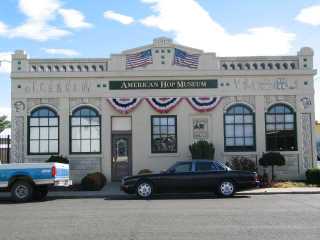 |
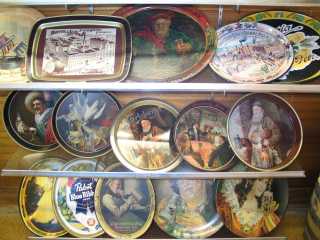 |
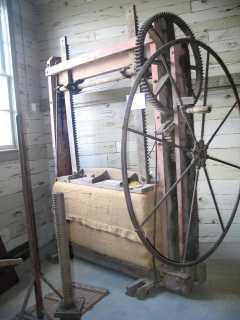 |
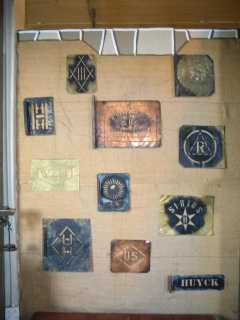 |
 |
 |
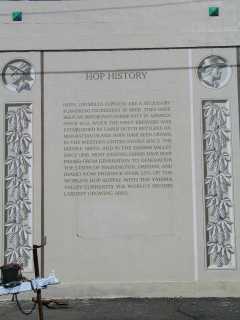 |
 |
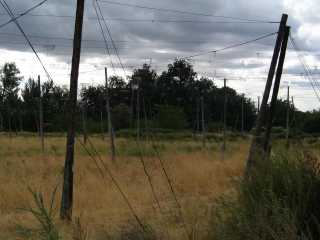 |
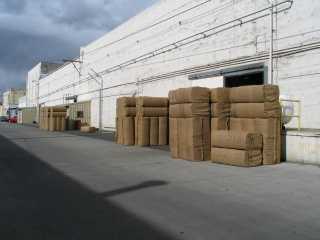 |
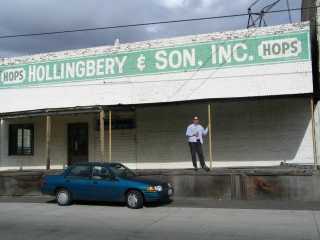 |
Next month's competition has the broad competition category, Meads and Cider BJCP categories 25 and 26
25. MEAD
25A. Traditional Mead
Aroma: Honey aroma should dominate, which may be sweet and may express the aroma of flower nectar. Aromas produced during fermentation, such as fruity esters and alcohol, may also be present.
Appearance: Clarity may be good to brilliant. Carbonated examples will show active evidence of dissolved gas but no head is expected. Color may range from pale straw to deep amber.
Flavor: The flavor of honey should be featured and may include residual sweetness. Any additives, such as acidity or tannin, should enhance the honey flavor and lend balance to the overall character of the mead.
Mouthfeel: Smooth texture. Most will be wine-like, with the warming presence of alcohol and sense of medium body. Sensations of a cloying or astringent character should be avoided.
Comments: A mead made primarily from honey, water and yeast. Meads which feature the character of a blended honey or a blend of honeys. For meads made from a single variety of money see below “B, Varietal Honey Traditional Mead.” While some oxidation of mead is OK and can actually lend useful complexity to the mead, over oxidation as exhibited by sherry-like aroma and/or taste should be avoided. Phenols produced by high temperature fermentation are also to be avoided. Entrants must specify whether the entry is still or sparkling mead. Entrants must also indicate whether the mead is dry, semi-sweet or sweet.
Vital Statistics: Effective OG: 1.070-1.120+
IBUs: N/A FG: 0.995-1.025
SRM: 1-16 ABV: 7.5-15+%
25B. Varietal Honey Traditional Mead
Aroma: Honey aroma should dominate, which may be sweet and may express the aroma of flower nectar. Aromas produced during fermentation, such as fruity esters and alcohol, may also be present. The particular Varietal honey aroma (such as orange blossoms for orange blossom honey) should be evident.
Appearance: Clarity may be good to brilliant. Carbonated examples will show active evidence of dissolved gas but no head is expected. Color may range from pale straw to deep amber.
Flavor: The flavor of honey should be featured and may include residual sweetness. The distinctive taste of the Varietal honey should be showcased. Any additives, such as acidity or tannin, should enhance the honey flavor and lend balance to the overall character of the mead.
Mouthfeel: Smooth texture. Most will be wine-like, with the warming presence of alcohol and sense of medium body. Sensations of a cloying or astringent character should be avoided.
Comments: Mead made from honey from a particular flower source. The brewer must name the varietal honey. Note that the character of a varietal honey will be identifiable as distinct to the source, but may not resemble the source. Orange-blossom honey has the character of orange blossoms, not oranges. Blackberry honey is only distantly like blackberries, although it is an identifiable character. While some oxidation of mead is OK and can actually lend useful complexity to the mead, over oxidation as exhibited by sherry-like aroma and/or taste should be avoided. Phenols produced by high temperature fermentation are also to be avoided. Entrants must specify whether the entry is still or sparkling mead. Entrants must also specify whether the entry is dry, semi-sweet or sweet.
Vital Statistics: Effective OG: 1.070-1.120+
IBUs: N/A FG: 0.995-1.025
SRM: 1-16 ABV: 7.5-15+
25C. Cyser (Apple Melomel)
A mead made with the addition of apples or apple juice. Traditionally, cysers are made by the addition of honey to apple juice without additional water.
Aroma: Should have distinct apple character with a pronounced honey aroma, which may be sweet and may express the aroma of flower nectar. Aromas produced during fermentation, such as fruity esters, low levels of sulfur and alcohol, may also be present.
Appearance: Clarity may be good to brilliant. Carbonated examples will show active evidence of dissolved gas but no head is expected. Color may range from pale straw to deep amber.
Flavor: Should have distinct apple character but should also have a balanced honey character. The Apple character may supply tart acidity to cut the honey sweetness, so one may notice tart acidity first and residual sweetness thereafter. Any additives, such as acidity or tannin, should enhance the honey flavor and lend balance to the overall character of the cyser. In well made examples of the style, the fruit is both distinctive and well-incorporated into the sugar-acid balance of the mead. Some of the best examples have the taste and aroma of an aged Calvados (apple brandy from northern France).
Mouthfeel: Smooth texture. Most will be wine-like, with the warming presence of alcohol and sense of medium body. Sensations of a cloying or astringent character should be avoided.
Comments: There should be an appealing blend of the fruit and honey character but not necessarily an even balance. Generally a good tannin-sweetness balance is desired, though very dry and very sweet examples do exist. Entrants must specify whether the entry is still or sparkling cyser. Entrants must also specify whether the entry is dry, semi-sweet or sweet.
Vital Statistics: Effective OG: 1.070-1.120+
IBUs: N/A FG: 0.995-1.025
SRM: 1-16 ABV: 7.5-15+%
25D. Pyment (Grape Melomel)
A mead made with the addition of grapes or grape juice. Alternatively, the pyment may be a grape wine sweetened with honey, a mixture of grape juice and honey that is fermented or a mixture of grape wine and mead mixed after fermentation.
Aroma: Should have distinct grape or grape-wine character with a pronounced honey aroma, which may be sweet and may express the aroma of flower nectar. Aromas produced during fermentation, such as fruity esters and alcohol, may also be present.
Appearance: Clarity will be good to brilliant. Carbonated examples will show active evidence of dissolved gas but no head is expected. Color would reflect the grape source, whether white, red or other.
Flavor: Should have distinct grape wine character, manifested in acidity, tannin and other grape characteristics, but the honey character should balance the fruit flavors. Grassy white wine character or buttery(diacetyl) Chardonnay character is appropriate in pyment only. In well made examples of the style, the fruit is both distinctive and well-incorporated into the sugar-acid balance of the pyment.
Mouthfeel: Smooth texture. Most will be wine-like, with the warming presence of alcohol and sense of medium body. Sensations of a cloying or astringent character should be avoided.
Comments: There should be an appealing blend of the fruit and honey character but not necessarily an even balance. Generally a good tannin-sweetness balance is desired, though very dry and very sweet examples do exist. Entrants must specify whether the entry is still or sparkling pyment. Entrants must also specify whether the entry is dry, semi-sweet, or sweet.
Vital Statistics: Effective OG: 1.070-1.120+
IBUs: N/A FG: 0.995-1.025
SRM: 1-16 ABV: 7.5-15+%
25E. Other Fruit Melomel
A mead made with the addition of other fruit or fruit juices. There should be an appealing blend of the fruit and honey character but not necessarily an even balance.
Aroma: Should exhibit the aroma of the fruit(s) present in the mead. In a melomel with a blend of fruits, one fruit may dominate the aroma profile.
Appearance: Clarity will be good to brilliant. Carbonated examples will show active evidence of dissolved gas but no head is expected. The particular fruit(s) used may or may not impart color to the mead.
Flavor: Fruit flavor contributions to the mead range from subtle acidic notes to intense, instantly recognizable fruit flavors. In a melomel with a blend of fruits, one fruit may dominate the flavor profile. There should be a balanced honey character as well. Some fruits will lend a cloying sweetness to the mead while others add a drying character. In well- made examples of the style, the fruit is both distinctive and well-incorporated into the sugar-acid balance of the mead.
Mouthfeel: Smooth texture. Most will be wine-like, with the warming presence of alcohol and sense of medium body. Sensations of a cloying or astringent character should be avoided.
Comments: Generally a good tannin-sweetness balance is desired, though very dry and very sweet examples do exist. Some fruits, notably darker ones like Blackberries, may contribute a tannin presence not unlike dark pyments. Some oxidative properties may be appropriate in certain fruit meads, giving them a sherry or port wine character. Entrants must specify whether the entry is still or sparkling mead. Entrants must also specify whether the mead is dry, semi-sweet or sweet.
Vital Statistics: Effective OG: 1.070-1.120+
IBUs: N/A FG: 0.995-1.025
SRM: 1-16 ABV: 7.5-15+%
25F. Metheglin
A mead made with the addition of spices or herbs.
Aroma: The spices/herbs may be expressed in the aroma. Honey characters should appear in the aroma but will vary in intensity depending on the spices/herbs used. Metheglins containing more than one spice should have a good balance among the different spices/herbs, though some spices/herbs will tend to dominate the aroma profile.
Appearance: Clarity may be good to brilliant. Carbonated examples will show active evidence of dissolved gas but no head is expected. Color may range from pale straw to deep amber; the color usually won't be affected by the spices or herbs.
Flavor: The spices/herbs should be expressed in the flavor but the honey character is still the backbone of the mead and should appear in the flavor but will vary in intensity depending on the spices/herbs used. The spices/herbs should be expressed in the flavor as a distinctive enhancement to the honey flavor, whether harmoniously or by contrast, and should achieve a pleasant balance when a blend of spices/herbs is used. Metheglins containing more than one spice should have a good balance among the different spices/herbs, though some spices/herbs will tend to dominate the flavor profile.
Mouthfeel: Smooth texture. Most will be wine-like, with the warming presence of alcohol and sense of medium body. Sensations of a cloying or astringent character should be avoided; however, some spices or herbs may affect mouthfeel particularly by adding astringency.
Comments: Often, a blend of spices may give a character greater than the sum of its parts. The better examples of this style use spices/herbs subtly and when more than one are used, they are carefully selected so that they blend harmoniously. Entrants must specify whether the entry is still or sparkling mead. Entrants must also specify whether the mead is dry, semi-sweet or sweet.
Vital Statistics: Effective OG: 1.070-1.120+
IBUs: N/A FG: 0.995-1.025
SRM: 1-16 ABV: 7.5-15+%
25G. Braggot
Meads made with both honey and malt providing flavor and fermentable extract. Originally, and alternatively, a mixture of mead and ale.
Aroma: Aroma of both honey and malt should be apparent and in balance. Hop aroma may be present but is not required.
Appearance: Straw to dark brown depending on the type of malt and honey used. Some head retention is expected. Clear, although some chill haze may be present at low temperatures.
Flavor: There should be some balance between the beer aspect and the mead aspect of a braggot, especially with regard to maltiness and bitterness versus honey character. Malt character ranges from light pale malt-type flavors to rich caramel flavors, depending on the malt used. Hop bitterness and flavor may be present but are not required.
Mouthfeel: Body may vary from light to medium. Smooth mouthfeel without astringency. Carbonation may vary from light to very lively.
Comments: The fermentable sugars should come from a balance of malt and honey, otherwise the beverage might better be entered as a Specialty Beer with the addition of honey. As a rule of thumb, the fermentables should consist of no less than 1/3 malt and no more than 2/3 honey. Hopped examples of this style should exhibit the hops distinctly and should have at least 15 IBUs.
Vital Statistics Effective OG: 1.060-1.120+
IBUs: 0-50 FG: 1.004-1.025
SRM: 3-16 ABV: 6.5-14%
25H. Mixed Category Mead
A mead that combines ingredients from two or more of the other mead sub-categories.
Aroma, appearance, flavor and other characteristics may vary and be combinations of the respective elements of the various sub-categories used in this style.
Comments: This mead should exhibit the character of all of the ingredients in varying degrees, and should show a good blending or balance between the various flavor elements.
26. CIDER
26A. Standard Cider and Perry
Aroma: Apples (pears, if a perry) should be distinctive and dominate. There may be some fermentation byproducts such as esters, alcohols and low levels of sulfur.
Appearance: Pale yellow to amber in color. Clear and brilliant. Carbonation may vary from absolutely still to very vigorous, as follows, Entrant must specify still or carbonated (level of carbonation optional):
Still: No carbonation visible or in the mouthfeel.
Petillant: Very lightly sparkling, visibly and in the mouth.
Sparkling: Clearly but not heavily carbonated.
Spuming or Spumante: Heavily and vigorously carbonated, bordering on gushing, with tight, fine bubbles, champagne-like.
Flavor: Crisp apple (pear) flavor should be present and distinctive. May be dry to sweet. Some noticeable alcohol character may be present at the upper end of the range (7%). There should be a balance in the acidic character and the residual sweetness.
Mouthfeel: Light body. No astringency. No carbonic bite from CO2.
Comments: Sugar adjuncts may be used. May be fermented by wine, Champagne, ale, lager or wild yeast. The entrant must also specify whether the entry is a cider or perry; dry, semi-dry or sweet; still or carbonated. If both apple and pear juice are used the entry must be entered as a special cider. Artificial carbonation is allowed. The method of carbonation need not be specified.
Vital Statistics: OG: 1.045-1.061
IBUs: NA FG: 0.990-1.012
SRM: 3-12 ABV: 4.5-7%
Commercial Examples: Broadoak, Hecks, Dunkerton's, Franklins, Rich's Framhouse Cider (all available only in England), Clos Normand, Herout Fils, Hornsby's Draft Cider (not the “Granny Smith” or “Amber”), Sidra El Gaitero, Kelly's Traditional Irish Premium Hard Cider, Minchew Perry (available only in England), Wyder's Pear Cider.
26B. New England-Style Cider
Aroma: Strong, pronounced apple aroma. The higher level of alcohol,8-14%, will be more noticeable in the aroma. Other fermentation byproducts may also be present.
Appearance: Pale to medium yellow. Still or sparkling. Carbonation must be natural. Clear and brilliant.
Flavor: Strong apple flavor. Usually dry. No hot alcohol taste. New England-Style cider is distinguished from other styles by its robust and sometimes unsophisticated taste. It is a rustic, homemade product, typically more forceful than delicate. Nevertheless, complexity and structure are often present.
Mouthfeel: Medium to full-bodied with some tannins.
Comments: Adjuncts may include white and brown sugars, molasses, honey (very sparingly), and/or raisins. Should use wild or wine yeast only. Entrants must specify whether still or sparkling and whether dry, semi-sweet or sweet.
Vital Statistics: OG: 1.061-1.105
IBUs: N/A FG: 0.990-1.010
SRM: 3-5 ABV: 7-14%
Commercial Examples: There are no known commercial examples of New England-style cider.
26C. Specialty Cider And Perry
Aroma: Apples (pears) should be distinctive and dominate. There may be some fermentation byproducts such as esters, alcohols and low levels of sulfur. Aromas from identified fruits and spices should also be noticeable as well.
Appearance: Carbonation may vary from absolutely still to very vigorous. Pale yellow in color, except where adjuncts such as spices or fruit may introduce a deeper shade or another color. Clear and brilliant.
Flavor: Crisp apple (pear) flavor should be present and distinctive. Declared adjuncts must be present in the taste and integrate well with the base cider. May be dry to sweet. Some noticeable alcohol character may be present but the emphasis should be on alcoholic warming, not the taste or harsh bite of alcohol in the mouth. There should be a balance in the acidic character and the residual sweetness.
Mouthfeel: Light to full body.
Comments: Sugar adjuncts may be used. May be fermented by wine, Champagne, ale, lager or wild yeast. There may be optional ingredients such as fruits and spices in which case the entrant must identify these. The entrant must also specify whether the entry is; dry, semi-dry or sweet; still or carbonated. Artificial carbonation is allowed. The method of carbonation need not be specified. The entrant must be careful in the use of honey as an adjunct; if the honey is the dominant fermentable the entry is a Cyser and must be entered in the Mead competition and not as a cider.
Ingredients: At least 75% apple (pear) juice with the remainder made from any variety of adjuncts. The alcohol content must be below 14%, but any type of yeast can be used in the production.
Vital Statistics: OG: 1.061-1.105
IBUs: N/A FG: 0.990-1.010
SRM: 3-12 ABV: 7-14%
Commercial Examples: Cider Jack fruit ciders.
Well, our last meeting of the year was a well attended one for sure. I believe the masses showed up to see Pat Babcock's first meeting as president. It was nice to see such a big turnout and Pat handled himself marvelously (although many people noted he needs a bigger mouth, like the last guy!)
We had a special guest at the meeting, Ken Schramm from the AABG, to talk about the annual Mazer Cup Mead Competition. Pat Babcock mentions more about this event later in this newsletter.
Pat started the meeting by introducing the new officers: Pat Babcock, Jim Racine, Mike Arend, Chris Frey and Rich Byrnes. He then thanked the outgoing staff for all their hard work, dedication and assistance to the club. Doug Geiss has volunteered for the Business Manager position again this year, Tyler Barber has volunteered for the Equipment Manager again and there is an “pening” or the exalted position of Special Events Coordinator. Please contact Pat Babcock or Rich Byrnes if interested. Johanne Wilson and Jim Rice are the judging coordinators for the year.
Pat also took a minute to thank all our retailers who gave us a discount the past year: Brew & Grow, Brew it Yourself, Cuomo Hardware, the HomeBrewery, Merchants Fine Wine in Ann Arbor, Dearborn and Royal Oak, Mt. Clemens Hardware and Wine Barrel Plus.
One of the highlights of the evening was introducing the 1998 Homebrewer of the year, Tyler Barber. Jim Rice (1997 Homebrewer of the year) and myself got to present the plaque and engraved mug to Tyler. Congratulations to Tyler who has challenged all brewers to try and beat him this year. Jim Racine was awfully close in club points to Tyler this year but Tyler had the edge with some other competitions.
Pat mentioned that the December issue of Midwest Beer Notes had a big article about Michigan beer and breweries.
The 50/50 raffle will be brought back to help defray costs. This month there were prizes thrown in the raffle and the full pot ($82) goes towards helping sponsor the Mazer Cup.
| Beer Events, Meetings & Competitions |  |
| January, 2004 | Wednesday, January 28th | F.O.R.D meeting at Bailey's Pub and Grille |
| 5:00 PM for dinner | 22091 Michigan Ave, Dearborn | |
| 6:00 PM for meeting | Corner of Michigan and Mason | |
| Phone 313-277-3212 | ||
| Club Competition Style | ||
| Barleywine | ||
| BJCP category #12 | ||
| & ALL GRAIN BEERS | ||
| Any BJCP category. (Must be at least 50% all grain.) | ||
| February, 2004 | Monday, February 16th | Entry deadline for War of the Worts IX HB Competition |
| Near Philadelphia, PA | ||
| http://www.keystonehops.org/wotw | ||
| Tuesday, February 17th | Entry deadline for Kansas City Bier Meisters 21st Annual | |
| HB Competition - MCAB qualifier | ||
| http://www.kcbiermeisters.org | ||
| Friday, February 20th | Entry deadline for America's Finest City 11th Annual | |
| HB Competition | ||
| Sponsored by QUAFF - 2 time AHA Club of the Year | ||
| http://www.quaff.org | ||
| Tuesday, February 24 | F.O.R.D meeting at Bailey's Pub and Grille | |
| 5:00 PM for dinner | 22091 Michigan Ave, Dearborn | |
| 6:00 PM for meeting | Corner of Michigan and Mason | |
| Phone 313-277-3212 | ||
| Club Competition Style | ||
| Mead and Cider | ||
| BJCP categories #25 and 26 | ||
| Friday, February 27 | Entry deadline for Reggale and Dredhop 11th Annual | |
| HB Competition - MCAB qualifier | ||
| Denver, CO | ||
| http://hopbarley.org/dredhop/ | ||
| Saturday, February 28 | Entry deadline for Bluebonnet Brew-off 2004 | |
| HB Competition - MCAB qualifier | ||
| http://www.bluebonnetbrewoff.com | ||
| March, 2004 | Wednesday, March 3 - | 7th Annual Real Ale Festival |
| Saturday, March 6 | Chicago, IL | |
| The festival has been reduced to a party due to an issue with | ||
| the venue's "on premises" license. | ||
| http://www.realalefestival.com | ||
| Saturday, March 13 | Entry deadline for the 6th Annual Drunk Monk Challenge | |
| HB competition - MCAB qualifier | ||
| Near Chicago, IL | ||
| http://knaves.org/dmc | ||
| Friday, March 19 | 9th Annual Winterfest Beer Tasting | |
| Sponsored by The Gourmet Club and Merchant's Fine Wine | ||
| Contact Schoolcraft Community College for tickets | ||
| Wednesday, March 24 | F.O.R.D meeting at Bailey's Pub and Grille | |
| 5:00 PM for dinner | 22091 Michigan Ave, Dearborn | |
| 6:00 PM for meeting | Corner of Michigan and Mason | |
| Phone 313-277-3212 | ||
| Club Competition Style | ||
| EXTRACT | ||
| Any BJCP category, must be at least 50% extract | ||
| April, 2004 | Friday, April 16 | Entry deadline for American Homebrewers Association |
| National Homebrew Competition | ||
| Entries due April 7-16, 2004 | ||
| First round judging April 23 - May 2, 2004 | ||
| Tuesday, April 27 | F.O.R.D meeting at Bailey's Pub and Grille | |
| 5:00 PM for dinner | 22091 Michigan Ave, Dearborn | |
| 6:00 PM for meeting | Corner of Michigan and Mason | |
| Phone 313-277-3212 | ||
| Club Competition Style | ||
| BITTER & ENGLISH PALE and IRISH RED ALE | ||
| BJCP category #4 and TBD | ||
| May, 2004 | Saturday, May 1 | 7th Annual Big Brew |
| National Home Brew Day | I'm sure Chris Frey will have his usual extraveganza!!! | |
| Stay tuned!! | ||
| Thursday, May 13 | Entry deadline for the AHA Club Only Competition | |
| Extract Brews | ||
| http://www.beertown.org/homebrewing/schedule.html | ||
| Wednesday, May 26 | F.O.R.D meeting at Bailey's Pub and Grille | |
| 5:00 PM for dinner | 22091 Michigan Ave, Dearborn | |
| 6:00 PM for meeting | Corner of Michigan and Mason | |
| Phone 313-277-3212 | ||
| Club Competition Style | ||
| BELGIAN-no Wit | ||
| BCJP category 18 & 19 (no 19b) | ||
| June, 2004 | Thursday, June 17 - | Beer and Loafing in Las Vegas |
| Saturday, June 19 | 26th Annual National Homebrewer's Conference | |
| Riveria Hotel and Casino | ||
| Las Vegas, NV | ||
| http://www.beerandloafing.org | ||
| Tuesday, June 22 | F.O.R.D meeting at Bailey's Pub and Grille | |
| 5:00 PM for dinner | 22091 Michigan Ave, Dearborn | |
| 6:00 PM for meeting | Corner of Michigan and Mason | |
| Phone 313-277-3212 | ||
| Club Competition Style | ||
| WHEAT | ||
| BJCP category 17 (club only comp) and category 19b & 3b |
| Fermental Funny |
| Ye Olde Brew
News published by the F.O.R.D. Homebrew Club |
|
| Editor: Tony Tantillo Contributors: Club Officers: |
F.O.R.D. is a private, non-profit organization
of homebrewers. The main goal of this club is to promote awareness and
appreciation of
the quality and variety of beer; to share information regarding
technique,
equipment and skill required to brew quality homemade beer; and to
encourage
responsible use of beer as an alcohol-containing beverage. Howard Klix Jr. 24737 Cushing Ave Eastpointe, MI 48021 Phone: (586) 779-1445 Visit our website at: http://www.be.ford.com/brewers/
current circulation... 125 |